4 friends. 70 miles. 1 state park.
In early February this year, Brian Threlkeld and four friends completed a 70-mile circumnavigation of Baxter State Park in northern Maine. They traveled on nordic skis, pulled 70-pound+ sleds, and slept outside (almost) every night. The crew faced frigid temps, starry night skies, and enjoyed the wonderful quiet that winter trips afford.
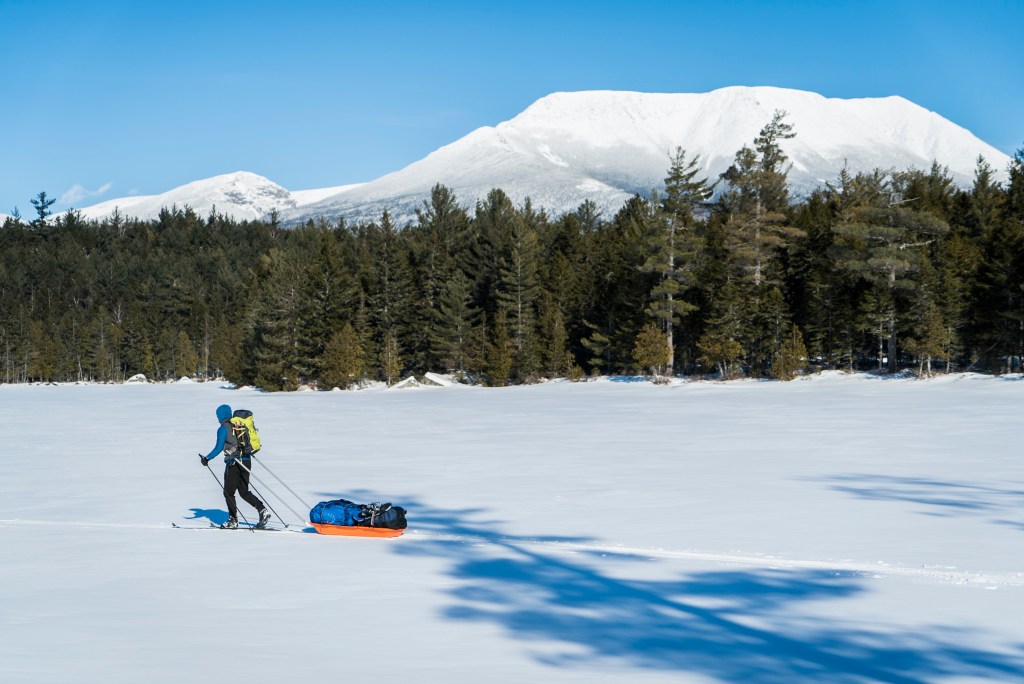
On past winter trips we’ve contoured around the Katahdin massif to the east, accessing the steep South Basin with long alpine ice and rock routes, but this trip was different. Traveling south and west of the peaks, we started the first day of our 70-mile circumnavigation with amazing views, blue bird skies, and a bit of apprehension as to why we were doing this.
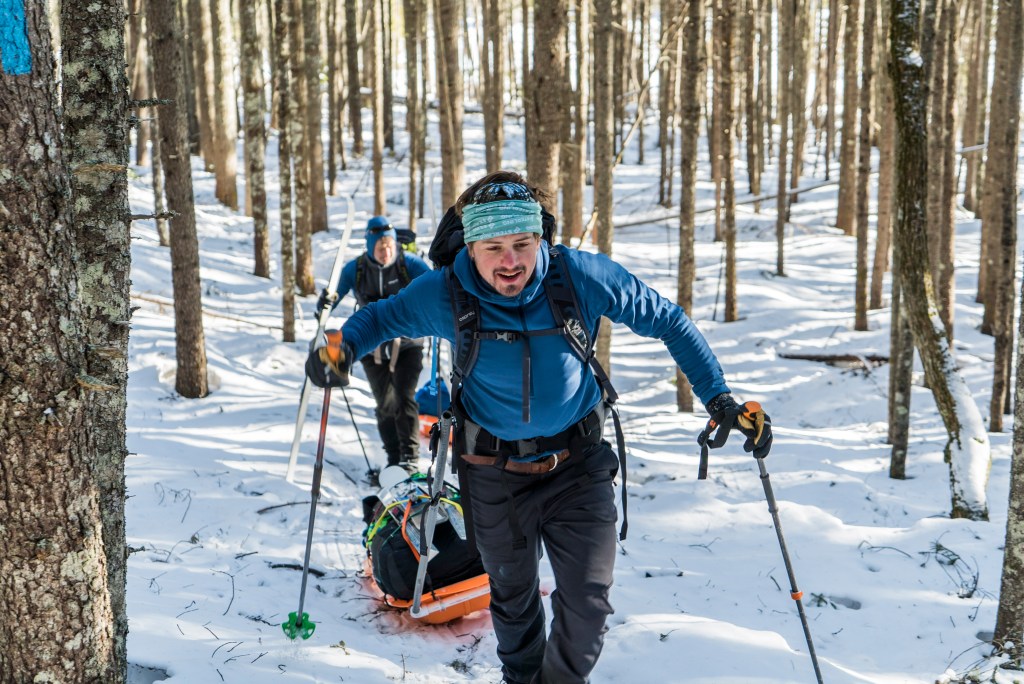
Scott, Greg, and I started the trip from Abol Pond and spent our first day heading toward Foster Field for our first night out. While the going was easy on the frozen lakes, the conditions were punctuated by windblown, snowshoed out trails in the forests between.
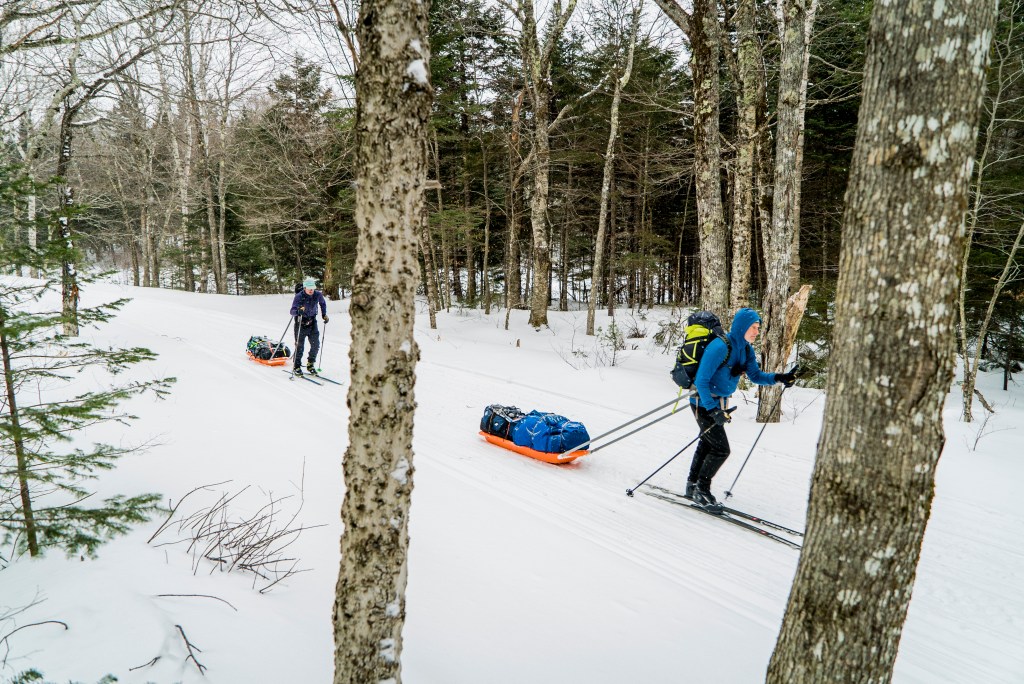
Skiing along the park tote road on day two was much easier than the one prior. Though there is snowmobile traffic in the park, we greatly appreciated the broken track left by a few machines. This was also our shortest day of the trip, a quick six miles to our next camp.
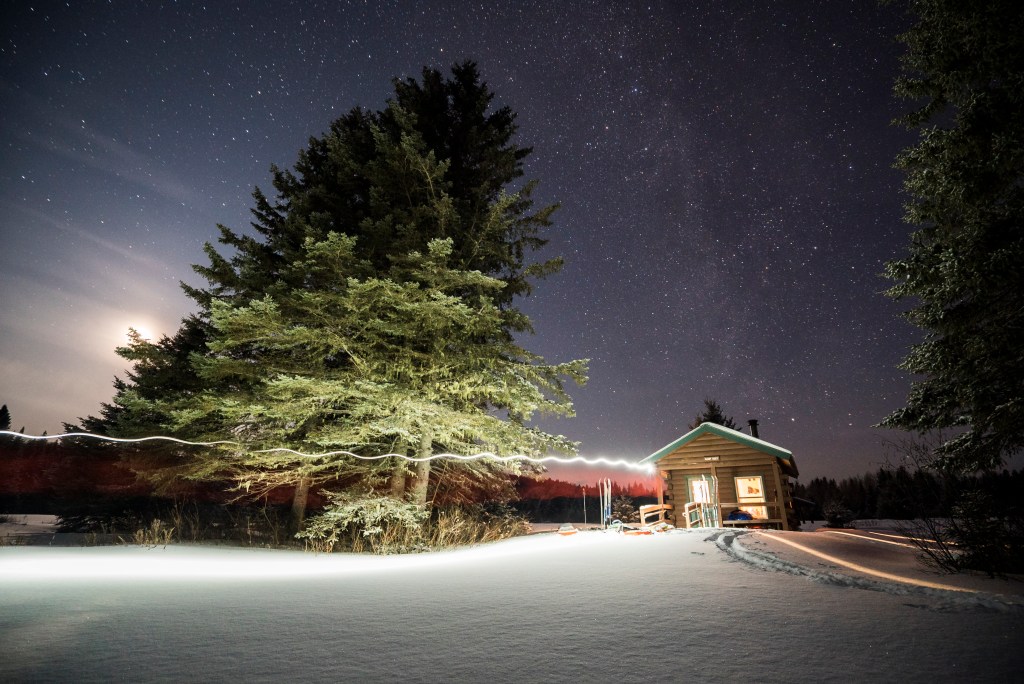
When we rolled into camp on our second night, we couldn’t find the old lean-tos were were looking for. That sounds like a good enough reason to poach the cabin with a woodstove, right? We spent a warm night drying gear and preparing for an adventurous next day.
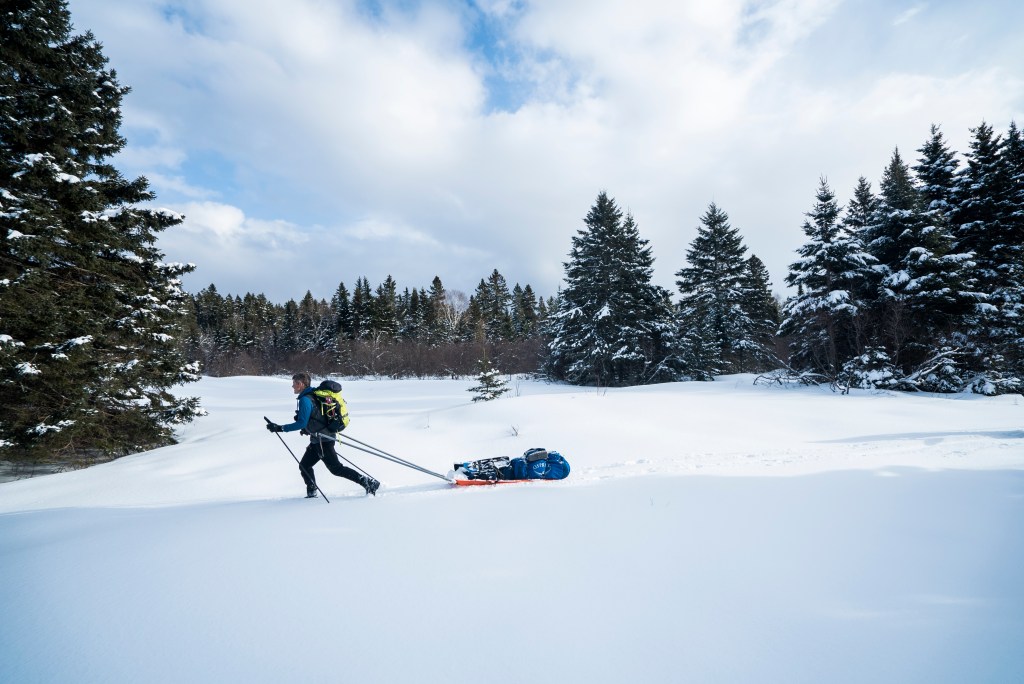
Day three found us breaking trail through shin-deep snow. We left the tote road for five miles and experienced blissful wintery travel. Snow-covered pines, solitude, and quiet were just some of the reasons we came on this trip and this day delivered the goods.
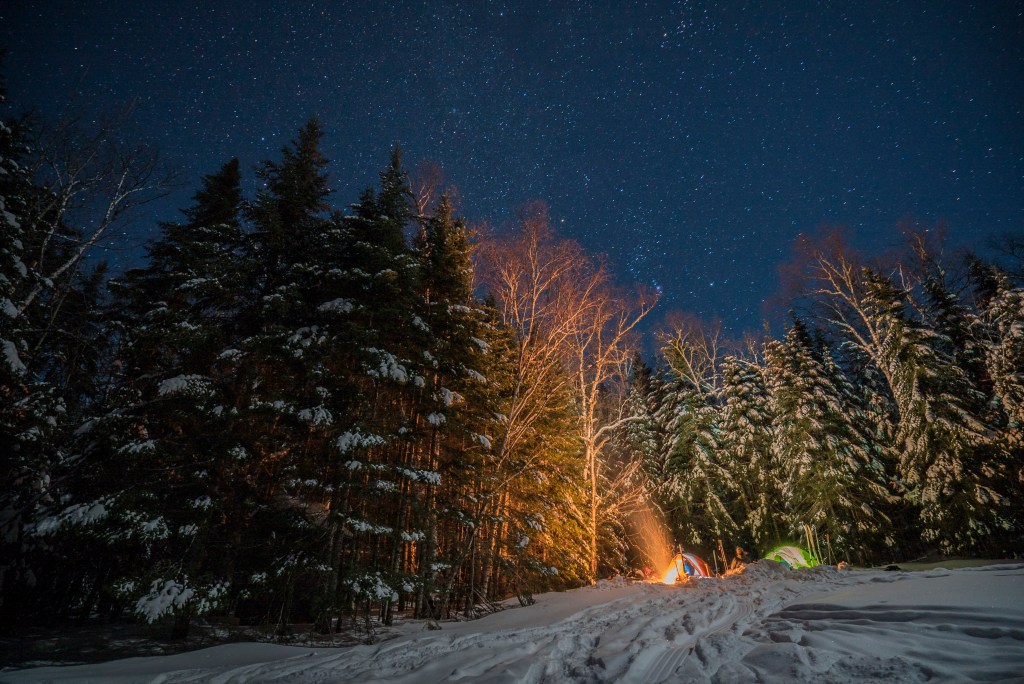
We rolled into camp near dusk. Being our third night out, we’d started to get into the groove and quickly gathered firewood, found an unfrozen water source, and put up the tents. We got the stove going, poured water into our bags of dehydrated food and enjoyed a little fire time. The temps that night dipped to nearly -15F, but our winter sleeping bags and the always important hot water bottles inside them kept us warm through the darkest hours.
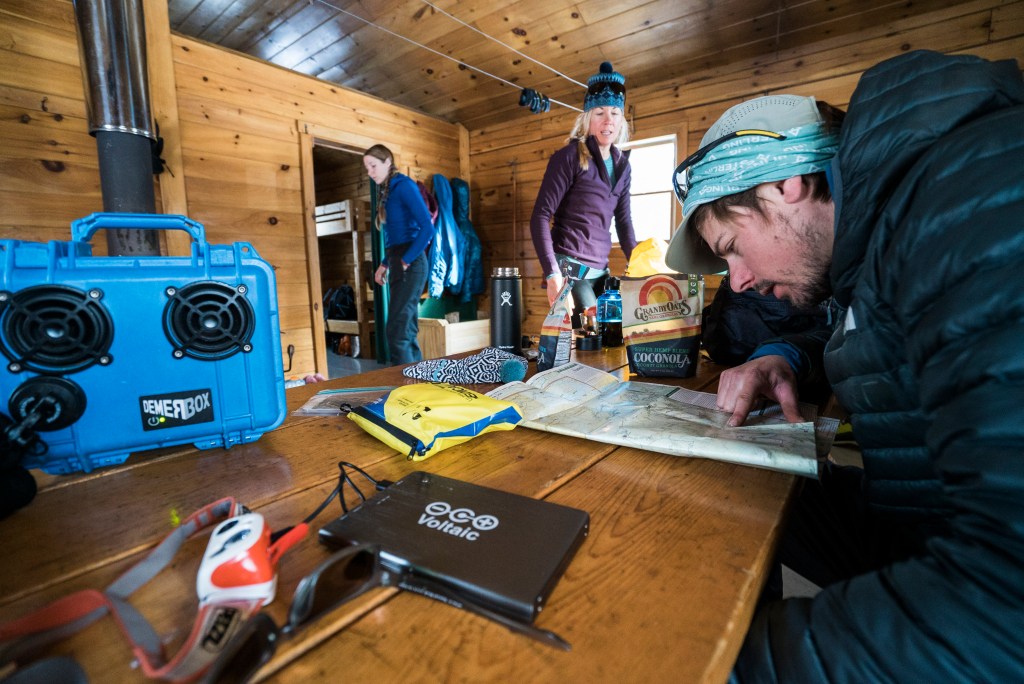
Darn bunkhouses, being so warm and inviting… When we skied into South Branch Pond on day four, our planned meeting spot with Kelsey and Sayde, we couldn’t resist the pull of another wood stove to dry sleeping bags, clothes, and boots. We did sleep outside again, as we did for the rest of the trip, but it certainly felt civilized to be warm for a few hours. It also allowed us to scope out the day hike we’d planned for the following day: the 10-mile Travelers Loop.

We woke to -15F temps and decided to pull the plug on the Travelers Loop. With the 30+mph winds and most of the hike above treeline, we decided it wouldn’t be prudent to go for it. It wasn’t the easiest decision, but it was the smartest one. Taking big risks when you’re 20 miles from the road can have big consequences. So we opted to move camp to Russell Pond, ten miles to our south. It felt good to feel the pull of the sled again and to move self-sufficiently through the landscape.
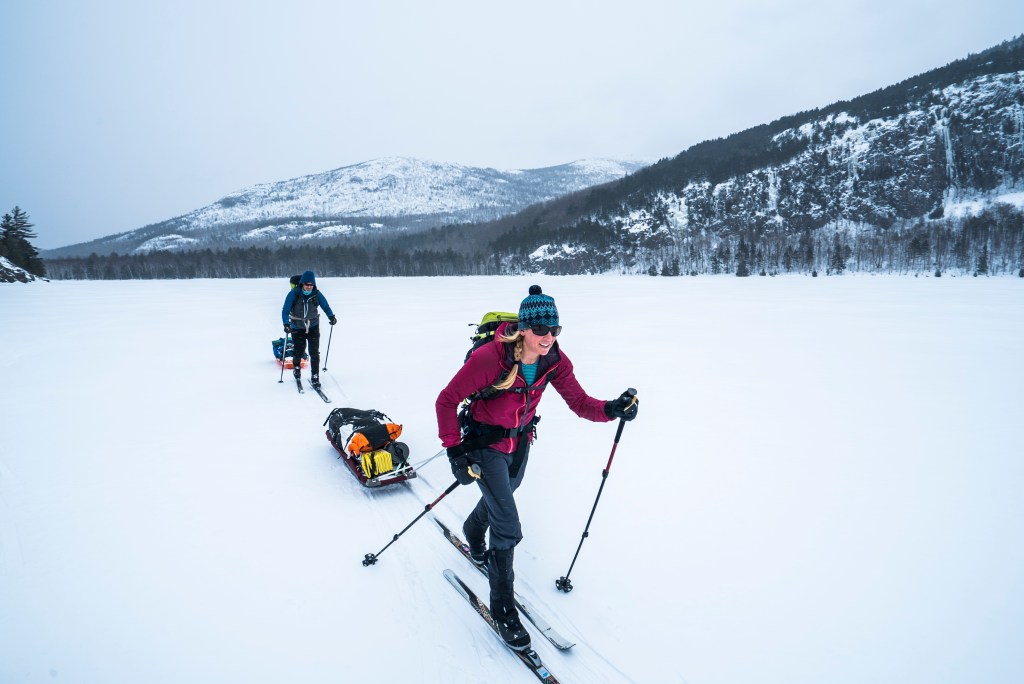
The sleds we pulled were designed by my buddy Greg, who has more winter experience than anyone I know. Sayde unfortunately wasn’t pulling one of his sleds and when we came to some big sidehills off the pond, her sled couldn’t track behind like ours and it kept spilling over. Having done numerous winter trips myself, I’ve seen plenty of variations of sleds being pulled and I almost always grimace at how shoddy some of the set-ups are. Sleds for most people are an afterthought, or a last minute item on the packing list. For me, they’re the foundation for these kinds of trips. Without a solid, trustworthy setup, you could be up a creek without a paddle, or in our case, on a 70-mile trip with no good way to carry all 80 pounds of gear.
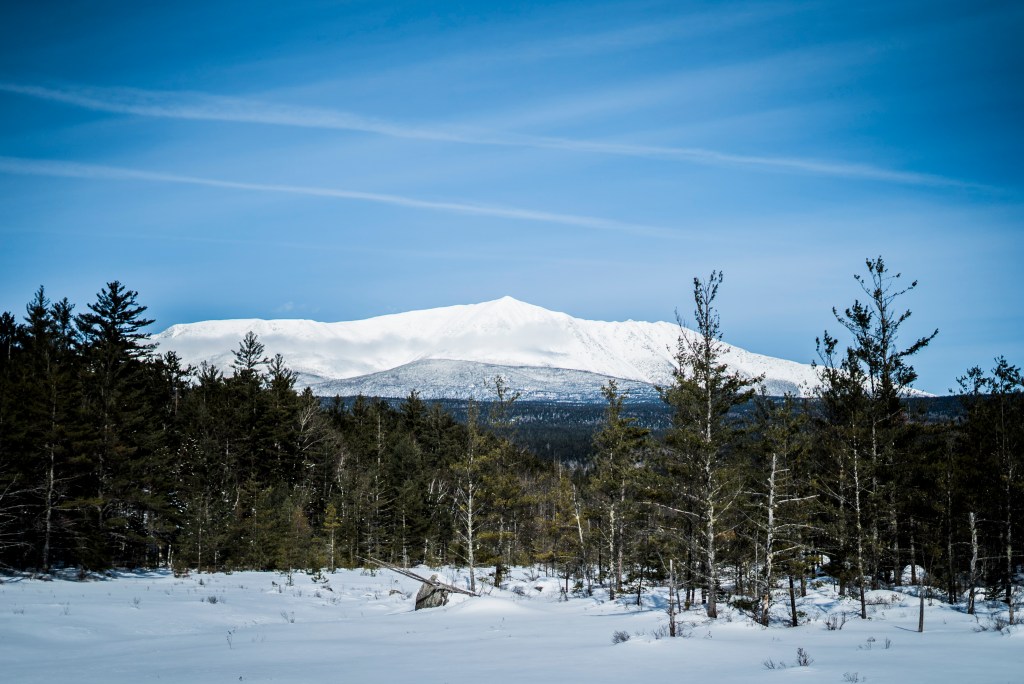
It was our last day and, once again, conditions dictated that we bail on our plans to hike up Baxter Peak to traverse the famed Knife Edge. Sure it looked pretty, but it was -10F, the winds were howling, and a huge front was rolling in that would blanket the land in a matter of hours. While it’s super hard deciding something isn’t a go without even trying it, I’ve been at this long enough now to know that that mountain will always be there and I’m heading back up soon to play again.
All photos by Brian Threlkeld
